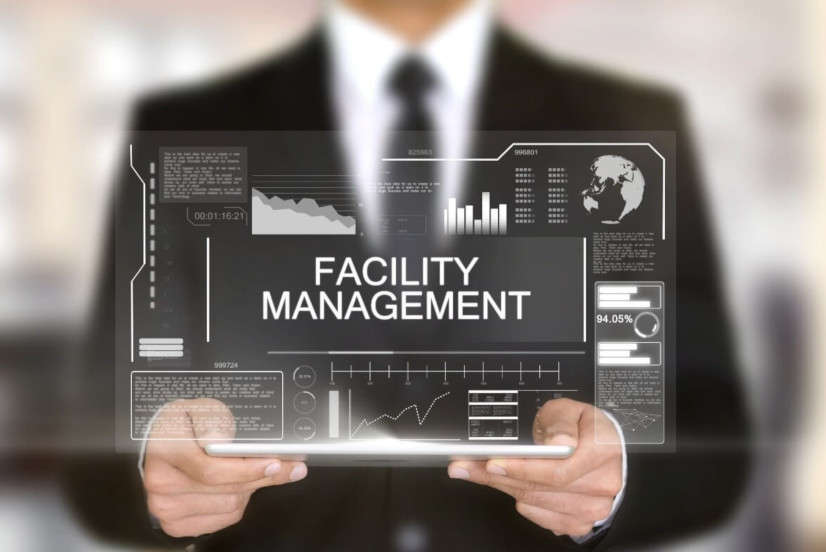Facility Management for Commercial Buildings-- A Full Review
Facility Management for Commercial Buildings-- A Full Review
Blog Article
Secret Trends Forming the Future of Facility Administration in 2024
As we expect 2024, the landscape of facility administration is positioned for considerable change, driven by numerous essential fads. The integration of smart building technologies and a shift towards data-driven decision-making promise to boost operational efficiency while prioritizing sustainability in practice. The development of crossbreed work designs is reshaping office environments, requiring innovative style remedies that provide to advancing worker requirements. Amidst these modifications, the focus on resident wellness remains to gain grip, emphasizing the relevance of a healthy and balanced work environment. Exactly how these patterns will certainly manifest in practice remains a crucial question for industry specialists.
Smart Structure Technologies

Smart building technologies include a large selection of systems, consisting of intelligent lighting, heating and cooling controls, and safety systems. By incorporating these systems, center supervisors can keep an eye on and readjust parameters in real-time, resulting in considerable reductions in energy waste and operational costs. Clever sensors can spot tenancy levels and readjust lights and temperature accordingly, guaranteeing that energy is just made use of when essential.
Additionally, these innovations assist in improved data collection, allowing companies to track usage patterns and identify opportunities for more renovations. The application of smart structure modern technologies not only contributes to sustainability objectives yet likewise creates much healthier workplace that can enhance staff member efficiency and contentment.
As we relocate into 2024, the fostering of wise building modern technologies will likely speed up, reflecting a wider shift in the direction of more smart, responsive, and lasting facility management methods.
Data-Driven Decision Making
Significantly, organizations are leveraging data-driven choice making to enhance center management techniques. By utilizing information analytics, facility supervisors can derive workable insights that dramatically improve functional efficiency and resource appropriation. The combination of innovative modern technologies, such as IoT sensors and real-time tracking systems, makes it possible for the collection of huge quantities of data on building efficiency, occupancy rates, and power consumption.
This wide range of information enables center managers to determine fads, predict maintenance requirements, and proactively address concerns prior to they rise. For instance, anticipating analytics can forecast tools failures, lowering downtime and repair expenses. Additionally, data visualization tools assist in far better communication among stakeholders, guaranteeing that notified choices are made collaboratively.
In addition, data-driven approaches enhance tactical planning by allowing facility managers to examine the performance of existing techniques and make educated selections regarding investments in technology or infrastructure. As organizations increasingly prioritize functional quality, data-driven choice production is positioned to end up being a foundation of effective facility administration techniques in 2024 and beyond. Ultimately, the ability to leverage information properly will encourage companies to produce much more effective, productive, and resilient centers.
Sustainability and Environment-friendly Practices
The focus on data-driven decision making naturally aligns with the expanding emphasis on sustainability and environment-friendly techniques within facility management. As organizations significantly focus on ecological responsibility, center managers are leveraging analytics to optimize source use, decrease waste, and minimize carbon impacts. This calculated method enables the assimilation of energy-efficient systems, such as LED illumination, smart heating and cooling controls, and renewable resource sources right into center operations.
In addition, the implementation of lasting practices expands beyond energy intake. Center managers are advertising and embracing eco-friendly products recycling efforts to create a round economy within their centers. This not only improves the environmental account of the company however additionally promotes a society of sustainability among employees.
Compliance with ecological policies is an additional important aspect driving the adoption of environment-friendly practices. By using information analytics, facility supervisors can monitor compliance metrics and recognize locations for enhancement, making certain adherence to global and local sustainability requirements.
Crossbreed Job Models
A considerable change in the direction of hybrid work designs is improving the landscape of center management in 2024. This paradigm integrates in-office and remote work, necessitating a reevaluation of area use, source allocation, and staff member engagement techniques. Organizations are significantly identifying the importance of versatile work areas that cater to varied requirements and choices.
Center managers need to adapt by carrying out versatile workplace designs that sustain collaborative efforts while providing areas for concentrated work. This consists of the combination of modern technology to promote seamless interaction and collaboration among in-office and remote employees. Smart structure solutions, furnished with sensing units and analytics, enable for real-time monitoring of area use, enabling organizations to maximize their environments efficiently.
Additionally, hybrid work designs stress the need for efficient center monitoring that prioritizes employee experience. This includes not just modern technology and space style yet also the advancement of plans that advertise a well balanced work-life dynamic. As firms navigate this transition, the function of center monitoring comes to be pivotal in creating a Website nimble work environment that cultivates performance and drives business success. Essentially, the hybrid work model is transforming facility administration, motivating a positive technique to fulfill the advancing needs of the labor force.
Boosted Owner Health
As companies accept hybrid work versions, an enhanced focus on resident wellness is coming to be important to facility management approaches. Facility Management. This change acknowledges that a healthy and completely satisfied labor force straight affects productivity and retention prices. Facility supervisors are now prioritizing environments that advertise mental and physical wellness, integrating components such as all-natural lighting, biophilic layout, and easily accessible wellness resources

Modern technology plays a crucial role in this evolution. Smart building systems can monitor environmental factors and adjust settings in real-time, ensuring optimum convenience degrees - Facility Management. Comments systems, such as occupancy sensing units and staff member studies, enable facility supervisors to consistently fine-tune wellness initiatives based on occupant demands.

Conclusion
In 2024, the future of facility management will be considerably influenced by the combination of smart building technologies and data-driven decision-making, promoting enhanced operational effectiveness. These patterns collectively underscore the evolving landscape of center monitoring in feedback to modern difficulties and chances.
Facility managers are adopting eco-friendly products and advertising reusing more efforts to create a round economic situation within their centers.A considerable shift in the direction of crossbreed work versions is reshaping the landscape of center administration in 2024.Furthermore, hybrid job designs emphasize the demand for efficient facility monitoring that focuses on employee experience.As companies accept hybrid work designs, a heightened emphasis on passenger wellness is coming to be essential to center administration strategies.In 2024, the future of center monitoring will be significantly influenced by the combination of smart structure innovations and data-driven decision-making, fostering improved operational efficiency.
Report this page